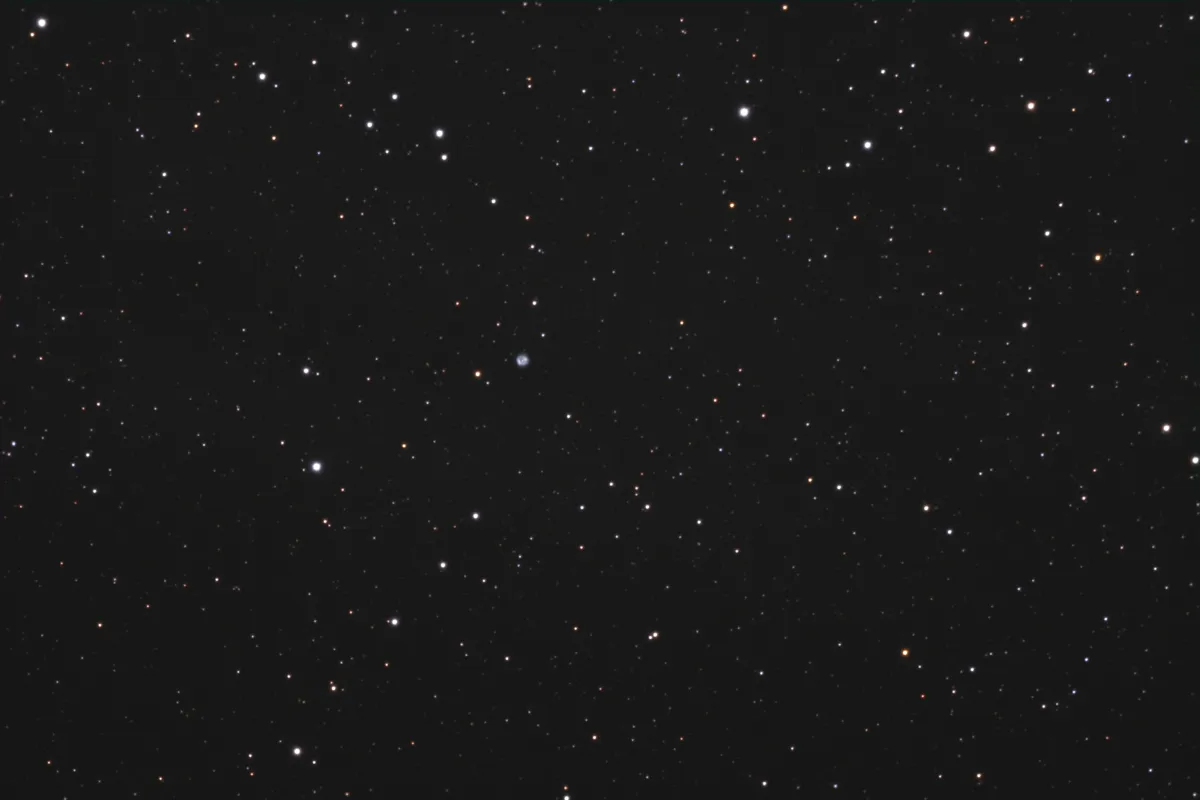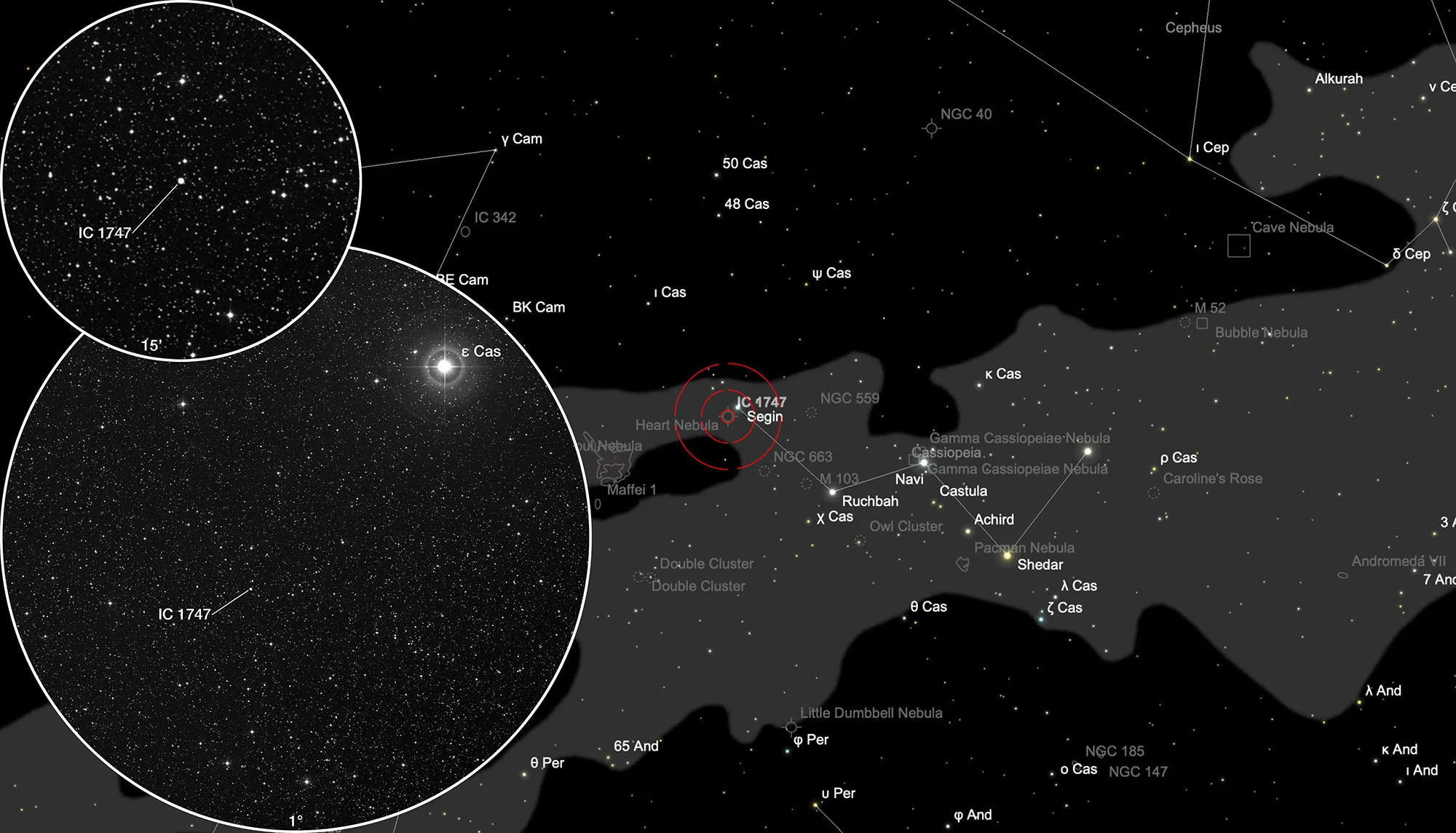Planetary Nebula IC 1747

Object Description
The small planetary nebula IC 1747 was discovered in 1905 by the Scottish-American astronomer Williamina Fleming photographically and visually-spectroscopically with an 8 inch telescope. She was an assistant to Edwart Pickering, an astronomy professor at Harward University. [196, 277]
IC 1747 belongs to the astrophysically rare but important group of planetary nebulae which have OVI, OVII and OVIII emission lines. Of the more than 1700 known planetary nebulae, only about 26 of the type OVI are known. [419]
| Designations | PN G130.2+01.3: IC 1747, PK 130+01.1, ARO 91, VV 7, VV' 10 |
| Right Ascension (J2000.0) | 01h 57m 36s |
| Declination (J2000.0) | +63° 19' 19" |
| Dimensions | 13." (optical) |
| Distance | 2.5 kpc |
| Radial Velocity | -66.5 ± 3.3 km/s |
| Expansion Velocity | 27.5 (O-III) km/s |
| C-Star Designations | AG82 12, CSI +63-01538 0, EM* CDS 226, EQ 0154 +630, HD 11758 |
| C-Star Magnitude | B: 15.8, V: 15.4 |
| C-Star Spectral Type | O VI, WC 4 |
| Discoverer | FLEMING 1905 |
Finder Chart
The planetary nebula IC 1747 is located in the constellation Cassiopeia, only about half a degree southeast of the star Segin (ε Cassiopeia). The PN is circumpolar with a declination of about 63 ° in Central Europe, but the best observation time is June to March, when it is highest at night.
